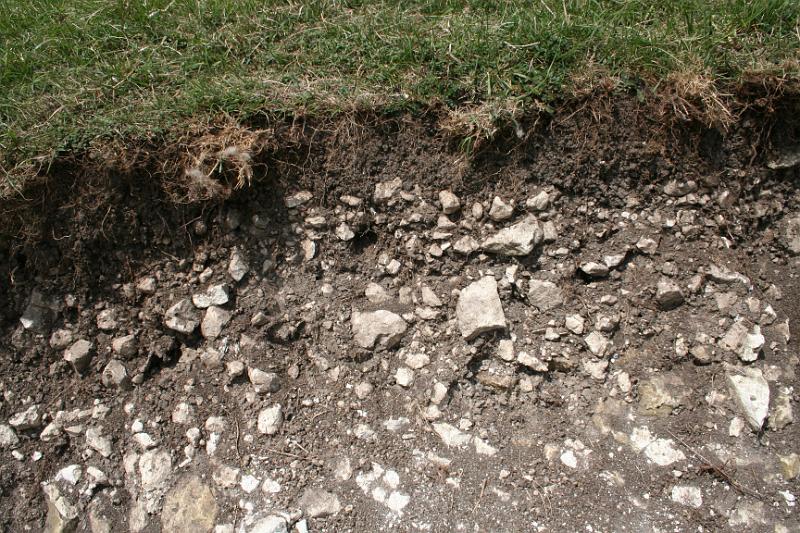Hello Gardening Enthusiasts. It is common knowledge that plants intake water, air and other nutrients through the soil they are planted in. Interestingly, different types of soils play different roles in determining and aiding the growth of plants.
In today’s blog, we will discuss the six different types of soil and their respective qualities.
Soil can be primarily categorized into six different groups, i.e., Clay, Silty, Sandy, Chalky, Loamy, and Peaty. As all soil types have different characteristics, it is imperative to know about the soil bed your garden has and what kind of plants would suit it.
1. Clay
Texture: Black-grey shades. A sticky lump when wet, a hard rock when dry.
Temperature: Starts warming up from spring onwards.


Properties:
- Rich in nutrients.
- Lesser air space.
- Poor drainage.
It is ideal for Perennial plants, Fruit trees, shrubs, and ornamental plants.
Notable flora: Flowering Quince, Aster, Helen’s Flower, Bergamot.
Unsuitable for: Vegetables, Soft berries.
2. Sandy Soil
Texture: Gritty, grainy soil. Porous, easy to cultivate.
Temperature: Starts warming up from spring onwards.


Properties:
- Fewer nutrients.
- Ample air space, easy drainage.
- Faster drying out time.
Ideal for: Shrubs and bulbous plants, Root vegetable plants, Commercial Salad.
Notable flora: Hibiscus, Tulips, Carrots, Lettuce, Parsnips, Potatoes.
Unsuitable for: Fruits, and plants requiring high nutrients.
3. Silty Soil
Texture: Soft, soapy soil. Usually moist, easily cultivated, and easily compacted.
Temperature: Moderately warm throughout the year.


Properties:
- Ample nutrients.
- Erosion-prone, Requires drainage assistance.
- Works best with organic compost.
Ideal for: Climbers, shrubs, grasses, moisture-loving trees, vegetables and fruits.
Notable flora: Willow, Dogwood, Mahonia, Cypress, Birch, New Zealand flax.
Unsuitable for: Cereal.
4. Peaty Soil
Texture: Dark, damp, and spongy. Higher peat levels.
Temperature: Heats up quickly during spring.


Properties:
- Acidic soil slows down decomposition. Acidity is reduced by adding Lime.
- Fewer nutrients can be enhanced by adding rich organic compost.
- Retains lots of water, and requires drainage.
Ideal for: Vegetables, Salads, Shrubs, and Legumes.
Notable flora: Rhododendron, Heather, Camellia, Hazel.
Unsuitable for: Fruit plants.
5. Chalky Soil
Texture: Large molecules, grainy soil. Stonier than other soils.
Temperature: Usually warm.


Properties:
- Alkaline soil can stunt growth.
- Free draining, ample nutrients.
- Can turn leaves yellow due to imbalanced pH.
Ideal for: Bulbous plants and Shrubs, garden vegetables.
Notable flora: Lilac, Spinach, Beetroot, Madonna Lily, Sweet Corn, Cabbage.
Unsuitable for: Fruit plants, weak plants.
6. Loamy Soil
Texture: A slightly damp mixture of sand, silt and clay.
Temperature: Warms up early during spring, doesn’t dry out in Summer.


Properties:
- Great structure. Adequate drainage. Acidity is reduced by adding Lime.
- Ample nutrients. Retains moisture.
- Acidic requires organic matter replenishment.
Ideal for: Climbers, Lawns, gardens, and shrubs.
Notable flora: Bamboo, Delphinium, Rubus, Salad crops.
Unsuitable for: large trees.
7. Getting the most out of your soil type.
Plants usually thrive in neutral soil types. But some plants tend to favour slightly alkaline or slightly acidic plants. Adjusting the pH level of your soil is an effective method to apply a temporary solution to it.
- To cut down acid levels and make your soil more alkaline, add ground lime to it.
- Chalky soil is alkaline. To make your soil higher on acid levels, add sulphur or aluminium sulphate.
- For soil that is low in nutrients, replenish it with organic compost and manure to enrich it.
- Clay soil is less porous, hence less airy. Add compost and peat to it a few weeks before sowing.
- Sandy soil can be loose. Add greensand to bind it. Greensand also loosens clay.


If you are a beginner, all of this might seem like a big deal that can be avoided as you merrily make your way across the garden, but you would be wrong. Identifying your soil type is the first step towards creating and maintaining a healthy garden. At the end of the day, your soil type is not going to change (until you change your residence, of course).
Also Read: 9 Best Trees To Grow In Pots For Your Garden









